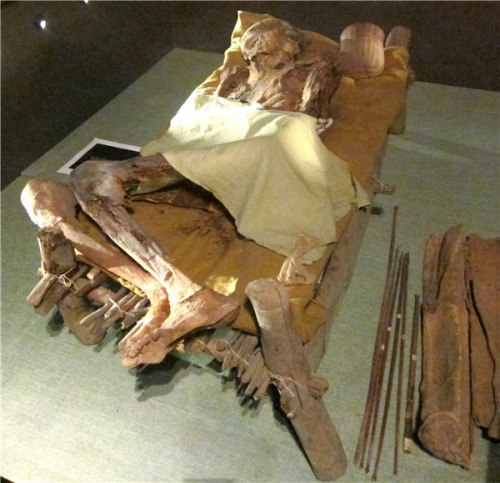
Turpan Museum houses mummies and prehistoric animal skeletons as well as the country's most celebrated archeological displays. (Photo by Erik Nilsson/China Daily)
Turpan is where pot-puffing warlock corpses gaze back at us through millennia.
It's no accident that its celebrated mummified shaman was entombed with marijuana.
But almost certainly no double entendre was intended when the Turpan Museum's English signage was translated to say this proves he occupied a "high position" in society.
The sorcerer was buried with nearly a kilogram of cannabis, believed to be the plant's earliest known psychoactive use.
He was also interred with a leather basket, bronze bell and ax, a harness and a harp-apparently everything a high-rolling mystic needs to make eternity enchanting.
The soothsayer and eight other mummies still command prestige among the country's most celebrated archeological displays.
Four were buried as couples. They offer a saccharine yet sepulcher defiance-or a superlative adherence-to the matrimonial mantra, "till death do us part".
Take your pick.
Looking at them, you realize that when modern people gawk at mummies, mummies gawk back. We stare at each other through the ages.
Only one of us blinks.
Turpan's hot and dry climate preserved not only Silk Road-era artifacts and buildings but also the period's people.
The cadavers were parched to become human jerky in the furnace baking the Flaming Mountains' foot, outside ancient ruins that still stand, although weathered by the sandblasts of time. They're basically mummies of cities-they haven't decayed to dust but have seen better days.
They survive as carcasses.
Incidentally, they're surrounded by present-day structures that preserve primeval techniques of desiccating grapes used since the mummies were alive. (If you think about it, raisins are essentially grape mummies.)
The museum's mummy exhibitions ensure that not only the cadavers' physiques but also their life histories are preserved-at least as much as archaeologists can decipher.
















































